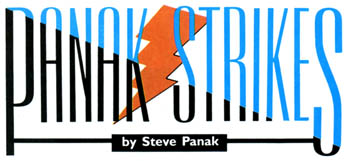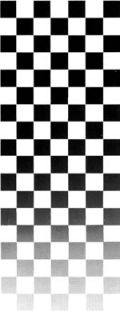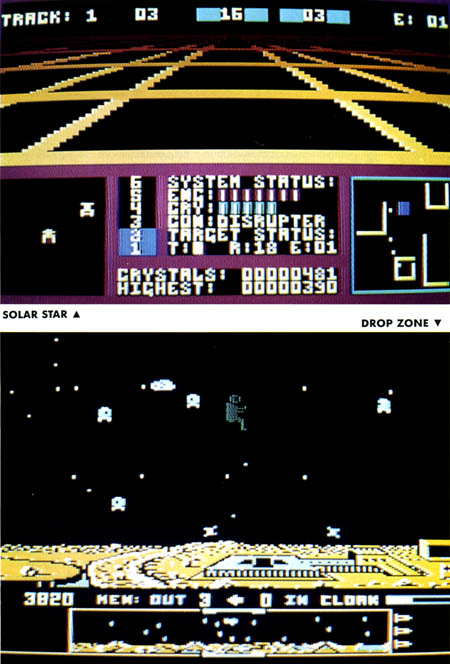
 Again
we are witness to yet another software market cycle. As you might have
noticed by now, an alarming number of software publishers are weaning
out Atari 8-bit support. Some new titles, which I'm certain would be
good sellers, and most of which probably don't require more memory than
the XL/XE series provides, just aren't in our language. It's getting
hard to find two games a month to examine for you, much less the four
or five I used to be able to play. And though this sounds like the
beginning of the end and is extremely distressing to Atari newcomers,
there has been an unexpected but welcome side effect.
Again
we are witness to yet another software market cycle. As you might have
noticed by now, an alarming number of software publishers are weaning
out Atari 8-bit support. Some new titles, which I'm certain would be
good sellers, and most of which probably don't require more memory than
the XL/XE series provides, just aren't in our language. It's getting
hard to find two games a month to examine for you, much less the four
or five I used to be able to play. And though this sounds like the
beginning of the end and is extremely distressing to Atari newcomers,
there has been an unexpected but welcome side effect.I'm starting to see a lot of independent producers and developers jumping into the water. And while some of their stuff is good, some bad and some mediocre, all of it is sensibly priced. The lack of high marketing, research and development and packaging costs is passed right on to us, the end users. This makes it a lot easier for a novice to stock his library with a lot of games of different types, where a few years ago he might only have been able to afford one or two. To make things even better, the big boys have seen this market niche as well, making us even bigger winners as they discount some of their older games, attempting to milk the few remaining dollars from their cash cows. If you pick and choose wisely, you can't help but be satisfied.
So keeping these two facts in mind, I think what we'll do to kick off the holiday season is to look at some oldies, and a couple of new games from a new company. I'm going to start by bringing you all up to date on a few of the best thinking-man's games available for the 8-bit. Games which require not fast reflexes nor superb hand-eye coordination, but instead ask you to think. And because they demand more of you, I like them the best. For you action addicts, if you'll just hang around until the end, I promise you a photon fix. And if you're not careful, you might even learn something before we're done.
When I think of thinking games, the first to come to mind is chess. Chess has been around for hundreds of years and is still complex enough to challenge the world's greatest minds. And when you feel up to the challenge, your Atari is ready for you, thanks to the Chessmaster 2000, from ElectronicArts, which I consider to be the best chess game available. In addition to having one of the most devastating decision-making algorithms available the program is also the most attractive, featuring a three-dimensional playing field which can be modified to your heart's content. Chock full of features, including multiple levels of difficulty, the ability to study the decision-making process and to print a log of moves, as well as all the standard options like move take-back and board setup, this grand master is likely to keep you engaged for months. And if you don't know how to play, Chessmaster is more than happy to teach you. Experts revel in its library of classic games and the brief history of computer chess contained in the generous manual. For all these reasons, and many more, Chessmaster 2000 is the best chess simulation on the market and a must for all game libraries.

Of course if you're a real masochist, you will probably love any of the many Infocom titles. These text adventures feature the most sophisticated grammatical parser available, and are able to understand complex and compound sentences. In fact, they often demand them. My favorite titles are the Zork trilogy, Stationfall and Planetfall, Suspended, The Hitchhiker's Guide to the Galaxy and Leather Goddesses of Phobos. And although this list indicates that I am partial to their comedy and science-fiction titles, rest assured that, like a bookstore, Infocom has titles to suit everyone's taste. From mysteries to romances to adventures, nearly every computer user who loves a good story will find at least one title to keep them up at night-all night. And to make it even easier on the pocketbook, many of their 8-bit prices have been lowered, some to a mere $9.95. At that price it's pretty hard to go wrong.
This
grand master is likely to Keep you
engaged for months. And if you don't know how to play,
Chessmaster is more than happy to teach you.
engaged for months. And if you don't know how to play,
Chessmaster is more than happy to teach you.
If you're into word games, there are a couple of titles out there to confound you. The first which comes to mind is Buzzword. This game is very similar to the Family Feud television show (minus the obnoxious Richard Dawson). In this game, you choose a category and are then given nine letters which begin nine words. Also provided are the number of letters in each word and a pool of available letters. The object is to guess all the words in the category and amass the most points. Different levels of difficulty make for family fun, as children of all ages can participate. Many find the game is most fun when played in a group setting. There are thousands of words in the hundred or so categories provided in the package-enough to keep the average player active for months. In fact, each category can be replayed a number of times before the words will be memorized. Even though it is a little-known game from a little known company, Buzzword should not be overlooked.
The second word game which comes to mind is Crosscheck from Datasoft. This word game reminds me of Scrabble, without all the wooden tiles to lose. Upon further examination though, it is a very original and multifaceted game. Up to four players take turns placing words on a crossword-style board. These words are guessed from clues given at the bottom of the screen. The number of letters in the word is determined randomly at the beginning of each player's turn by a roll of the electronic dice. Different versions of the game contain different objectives. You can race to connect two areas of the board or play for points, with or without a time limit. The board is huge with a magnify feature allowing you to zoom in to place your word in the best strategic position. And while some of the clues are simple, additional clue libraries ensure Crosscheck lovers are not left in the dark. Truly a diamond in the rough, and worth a look.
Solar Star
by Glenn Cassim
Drop Zone
by Archer Maclean
Microdaft
19 Harbor Drive
Lake Hopatcong, NJ 07849
by Glenn Cassim
Drop Zone
by Archer Maclean
Microdaft
19 Harbor Drive
Lake Hopatcong, NJ 07849
Here we are in phase two of this month's discourse. A look at a couple of new games from a new company. The new company is Microdaft (which gets the award for the stupidest name), and the first game is Drop Zone. Or should I say the first game is Defender, as Drop Zone is a copy of William's arcade classic nearly verbatim; the only difference being that you are represented by a man in a spacesuit, rather than by a sleek star fighter.
In case you didn't catch Defender the first time around, it is your basic space shoot-'emup, the main twist being the ruthlessness of the objects you encounter. Of course, in Drop Zone the names of all these items have been changed to protect the guilty. Androids and Nemesites, Spores and Nmeyes will plague you as you attempt to rescue your men who are stranded on a planet being overrun by aliens.
Using the joystick, you move up and down, left and right. The space bar releases a smart bomb, which destroys everything on the screen, while any other key activates your cloak, which makes you invisible to the enemy. The only other key you need to worry about is the escape key, which pauses the action when you feel you need a break. There's not a lot to learn about in this game-no great secrets. But what it lacks in complexity it makes up for in sheer difficulty. Each successive wave of enemy onslaught will tax your arcade skills to their limits.
The graphics are surprisingly good, given I've come to expect so little from 8-bit games of late. The action moves every bit as fast as any arcade game I've seen, commercial or otherwise, and the joystick is very responsive. The effect as you explode is especially impressive. The slight manual explains each control succinctly, making Drop Zone a pleasant surprise.
Solar Star is a little harder to describe, as it is one of those rare video games which was not inspired by or was not a rip-off of someone else's idea. And as it is new and unusual, it is also a little harder to like. It might be described as an electronic game of tag, or it might not.
The background story concerns a giant energy grid which is used to supply spacefaring vessels with solar fuel. Unfortunately, the computers which were designed to protect the grid began to do their job a little too well, depriving ships of much-needed fuel. Your mission is to gather as many energy crystals as possible, blasting disrupters (the enemy) until they release a crystal. It's basically a race against time to complete the mission before you exhaust your energy.
The screen is divided into four areas. The top half of the display contains a first-person point of view as you move about a large grid which is divided into areas by force fields. Contact with these fields reduces your energy, and when you're out of energy, your game is over. The bottom right- and left-hand corners contain overhead views of the grid, in increasing degrees of magnification. Centered in the bottom of the screen is a readout area to keep you abreast of the various game parameters, such as score and speed. This is a lot to keep track of, and what made it more confusing was the fact that I used one of the bottom displays more than the large main view.
Collect enough crystals, and you'll move on to the next level. The graphics are pretty standard stuff, about at the level of the 2600-blocky but fast-moving. The manual is fraught with misspelled words, but otherwise accurate. I didn't really like this one as much as Drop Zone, and I can't recommend it. But I do praise it for its originality.
That's about it for this month. Next month we'll take a look at the latest SSI simulation and evaluate it up against a new simulation from Datasoft.
Until then, happy holidays.